Guide to Clear Saved Passwords Chrome, Firefox, and Edge

Most modern browsers offer a "save password" feature, which saves us from the hassle of repeatedly entering usernames and passwords after the cookies expire . While this feature is convenient, it poses a significant security risk. If your computer or browser account is compromised, all your online account passwords could be exposed. To mitigate this risk, it's essential to disable the browser's password-saving feature. This article guides you through deleting saved passwords and disabling the "save password" feature.
Note: Remember to export your passwords in case you forget them. You can refer to this article for guidance.
Part 1: Clearing Saved Passwords in Google Chrome
Google Chrome provides a password manager for convenient management of saved passwords in the browser. Additionally, you can delete all passwords by clearing browsing data. Here's how.
Managing Individual Password with Google Password Manager
Step 1: Open the Google Password Manager by entering chrome://password-manager/passwords in the address bar.

Tips: Alternatively, you can find it by typing "password manager" in the search bar of the "Settings" page.
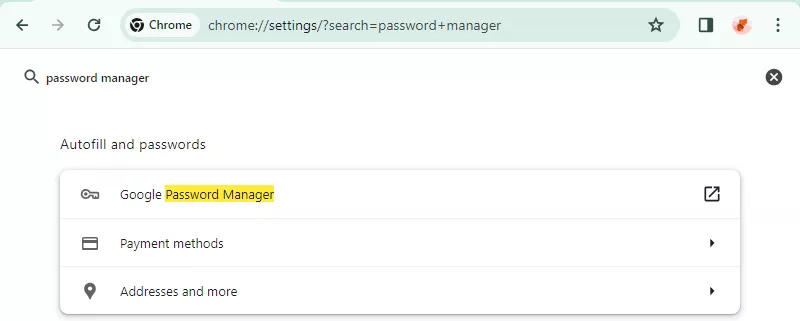
Step 2: You will see all the saved passwords on this page.
Step 3: Click on the item you want to delete or modify, then you can edit or delete it.
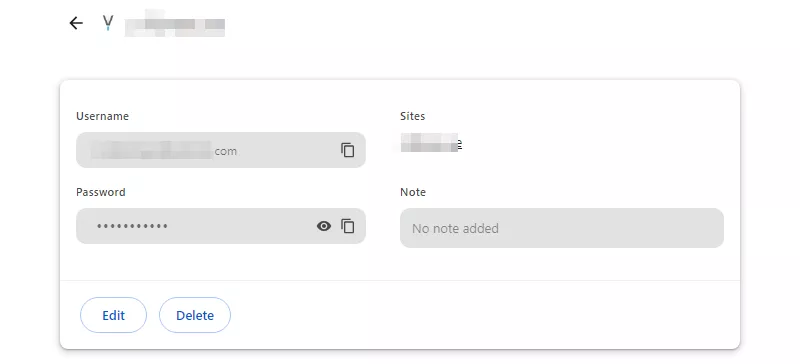
Batch Deletion of Passwords using "Clear browsing data" Option
Step 1: Open the privacy tab by typing chrome://settings/privacy in the address bar.
Step 2: Navigate to "Clear browsing data" in the "Privacy and security" section.
Tips: Alternatively, you can use the keyboard shortcut "Ctrl + Shift + Delete" to directly open the "Clear browsing data" window.
Step 3: Select the "Advanced" option, then choose "All time" from the "Time range" drop-down menu.
Step 4: Check the box next to "Passwords and other sign-in data" and click on "Clear data".

Step 5: You have now deleted all saved passwords in the Chrome browser.
Tips: Deleting saved passwords will not log you out of the website. If you want to log out of all websites, select "Cookies and other site data" in step 4.
Part 2: Erasing Saved Passwords in Microsoft Edge
Similarly, Microsoft Edge offers "Microsoft Wallet" for managing saved passwords. What's more, you can delete all passwords by using "clear browsing data". Let's take a look at the steps.
Deleting Individual Password with Microsoft Wallet
Step 1: Open passwords management page in Microsoft Wallet by entering edge://wallet/passwords in the address bar.
Tips: Alternatively, you can access it by clicking three-dots icon -> "Settings" -> "Profiles" -> "Passwords" in the "Microsoft Wallet" section.
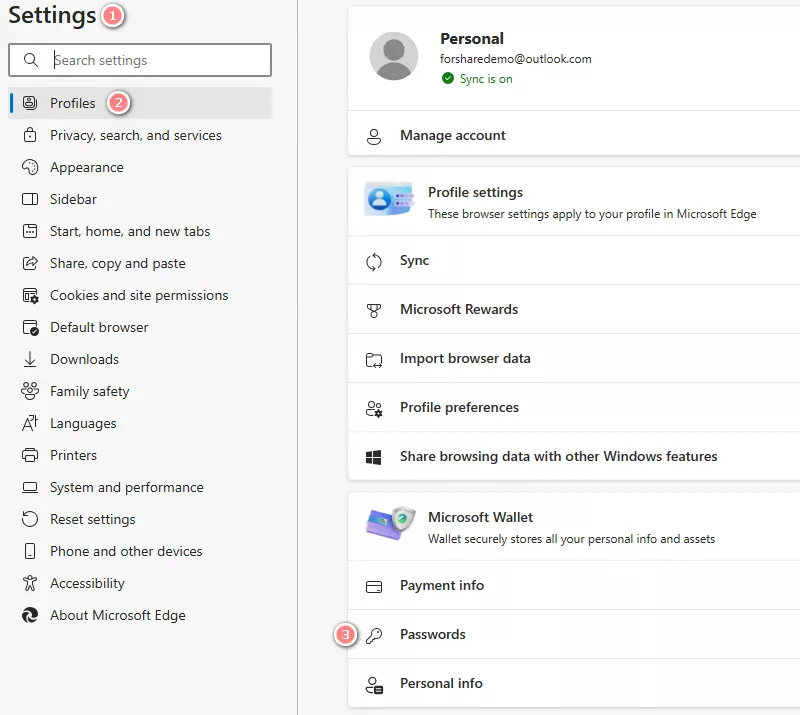
Step 2: Click on the item you want to modify, then edit or delete on the following page.
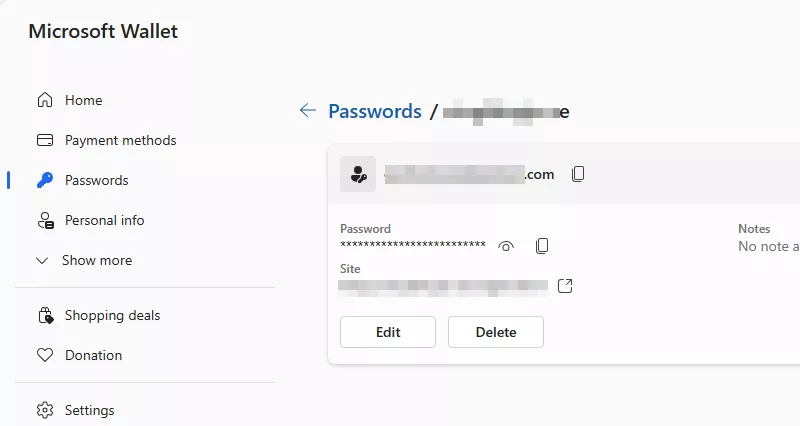
Delete All Passwords using "Clear browsing data" Option
Step 1: Press "Ctrl + Shift + Delete" simultaneously to open "Clear browsing data" window.
Step 2: Select "Passwords" and switch to "All time" in the "Time range" section.
Step 3: Click on "Clear now" to delete all saved passwords in Edge and the cloud.

Part 3: Deleting Saved Passwords in Firefox
Firefox integrates the option to remove all passwords in the "Passwords" tab, allowing you to manage and remove all passwords from one central location. Let's delve into the steps.
Deleting Passwords via "Passwords" Tab
Step 1: Click on the three stripes icon in the top-right corner of the browser and select "Passwords" to open "Passwords" page.
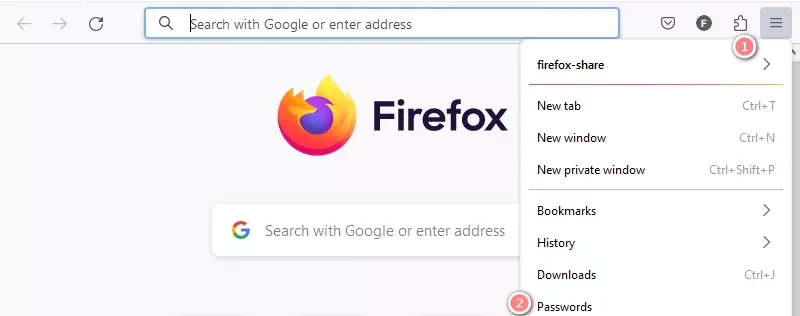
Step 2: Select the item you want to mange, then edit or delete it on this page.
Step 3: To remove all passwords, click on the three dots in the top-right corner of this page and select the "Remove All Passwords" option.

Part 4: Disabling the Save Password Feature
To prevent being prompted to save passwords again, you can disable the save password feature, known as "Offer to save passwords," in browsers. Simply toggle off the "Offer to save passwords" option. Here's how to do it in Chrome, Firefox, and Edge.
Disable the Password Saving Feature in Chrome
Step 1: Select "Settings" on the Google Password Manager page.
Step 2: Toggle off the "Offer to save passwords" option.
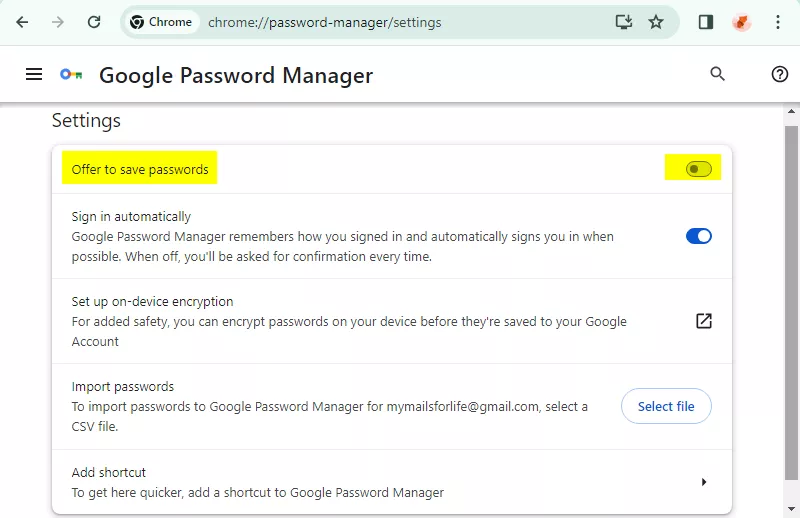
Step 3: After this, you won't be asked again to save password.
Disable the Password Saving Feature in Edge
Step 1: Choose "Settings" on the Microsoft Wallet page.
Step 2: Scroll down to locate the "Offer to save passwords" option in the "Passwords" section.
Step 3: Toggle it off to disable the password saving feature.
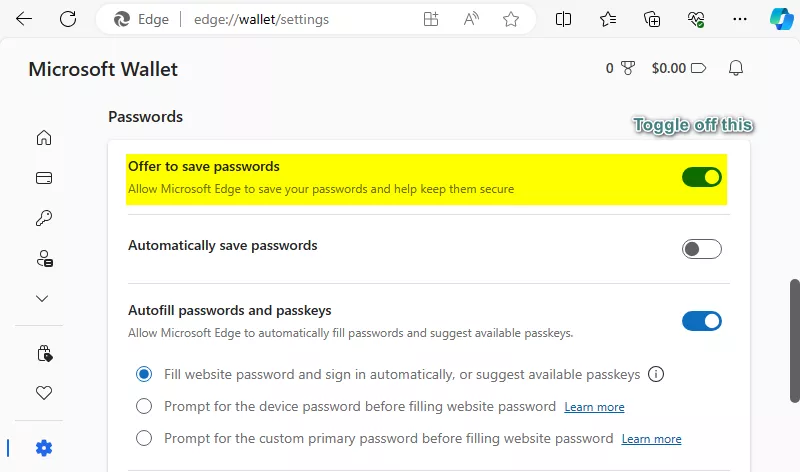
Disable the Password Saving Feature in Firefox
Step 1: Open "Privacy & Security" window by typing about:preferences#privacy in the address bar.
Step 2: Scroll down to locate the "Ask to save passwords" option in the "Passwords" section.
Step 3: Uncheck it to complete the setup.
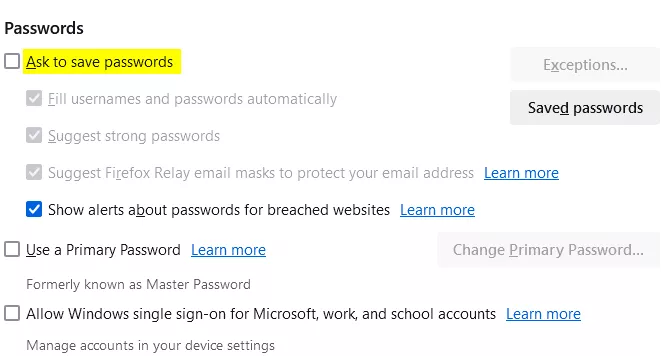
Part 5: Secure Password Management Practices
There are several alternatives for saving passwords. The safest method is to remember them in your brain, but it's prone to forgetting. Effective password management should prioritize safety, accessibility, recovery options, and stability. Consider opting for a dedicated third-party password manager that meets these criteria. Alternatively, explore newer technologies such as MFA (Multi-factor authentication).
Conclusion
This article offers a step-by-step guide on how to delete saved passwords in Chrome, Firefox, and Edge. Try deleting your browser's saved passwords now to ensure the security of your data.




















